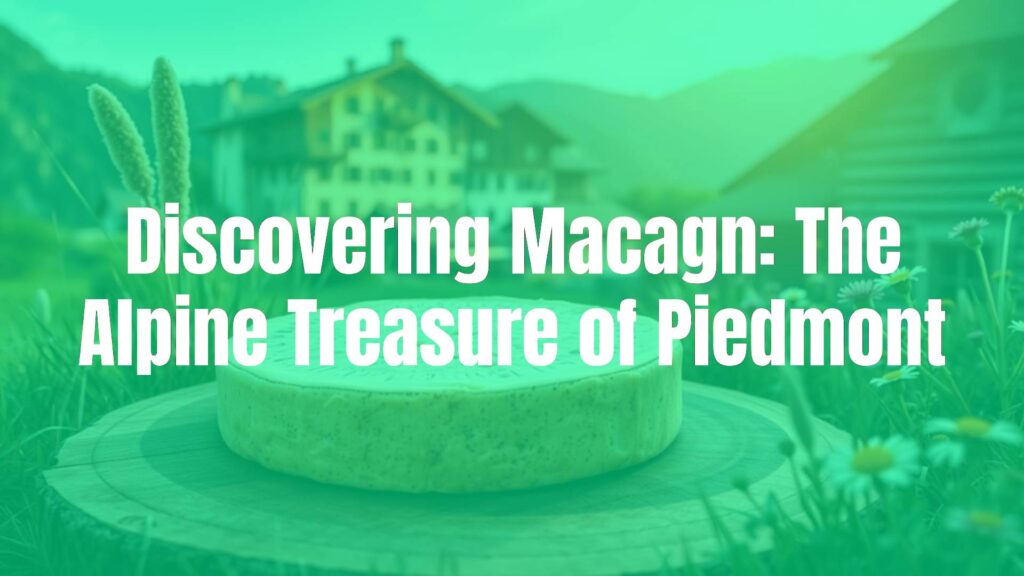Macagn: A Distinctive Alpine Cheese from Italy
Introduction to Macagn
Macagn is an artisanal cheese that originates from the high-altitude pastures of northern Italy, specifically the Val Sesia and Biella territories in Piedmont. Revered for its connection to local tradition and natural alpine environments, Macagn embodies the craftsmanship and dairy heritage of its region. It is often celebrated by cheese enthusiasts for its delicate aromas, unique texture, and marked historical significance.
What Sets Macagn Apart
Macagn is a semi-hard, raw cow’s milk cheese, traditionally produced solely with milk from cows grazing on mountain grasses. Its rind is thin and can develop a rustic, golden hue with aging. Inside, the cheese features a straw-yellow paste interspersed with small eyes or holes, and a supple, elastic texture that becomes more crumbly as it matures. The flavor profile is gentle and milky when youthful, developing nutty, herbaceous tones and a mild tang upon aging, reflecting the diverse alpine flora consumed by the cows.
Historical and Regional Context
The roots of Macagn extend back centuries, taking its name from ‘Alpe Macagn’, a high pasture zone in the Biella Alps. Historically produced by local families and shepherds who migrated with their herds through the valleys, this cheese was both sustenance and a symbol of resourcefulness. It remains closely tied to the traditions of transhumance—a practice in which livestock are seasonally moved to mountain pastures—and reflects the culture of highland dairying that is an integral part of Piedmont’s identity.
Crafting Macagn: Traditional Methods
Production of Macagn adheres to time-honored artisanal techniques. Unpasteurized cow’s milk is lightly warmed in copper vats and coagulated using natural rennet. The curds are carefully broken into small granules before being packed into molds and gently pressed. Aging can range from about 30 days to several months, and the environment—often stone cellars or wooden shelves—imparts distinct nuances to each wheel. The result is a cheese closely tied to the flavors of its alpine origin.
Serving and Enjoyment
Locals often enjoy Macagn sliced or cut into wedges as part of an antipasto platter, where it pairs beautifully with regional breads such as rye or rustic sourdough. Its subtle aromas and flavor profile also harmonize with natural honeys, nuts, or seasonal fruit. In the kitchen, Macagn adds richness to polenta, risotto, or vegetable gratins, and can be gently melted for savory pies or fondue-style dishes. Lighter, younger Macagn is ideal for casual snacking, while aged forms shine when savored slowly with a robust glass of Nebbiolo or other Piedmontese reds.
Regional Pairings and Cultural Role
This cherished cheese is deeply woven into the daily life and festivals of the Biella and Val Sesia communities. It frequently appears at local markets, food fairs, and as a centerpiece of family gatherings. Macagn’s close connection to the landscape, highland agriculture, and artisan producers have made it a symbol of Piedmontese rural culture. Its continued small-batch production supports the preservation of local breeds and sustainable mountain farming.
Varieties and Tips for Selection
While traditional Macagn is strictly tied to raw milk and summer pastures, some modern versions may vary slightly in texture or intensity, depending on season and aging time. When choosing Macagn, look for a cheese with a fragrant yet mild aroma and a clean, elastic paste free from excessive dryness. Enjoy it at room temperature to fully appreciate its complexity and subtlety.

